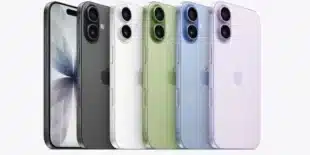A recent viral video featuring a woman appearing to scroll through a transparent smartphone has captivated millions online, sparking widespread speculation about futuristic technology. However, the object in question is not a high-tech device but rather a clear acrylic slab designed to mimic the form of a smartphone.
The video, posted by TikTok user @askcatgpt, shows the woman standing in a San Francisco shop, seemingly engaged with the transparent object as if it were a functioning phone. This visual prompted viewers to question the nature of the device, with some suggesting it was a prototype of a transparent phone.
In a follow-up video, the woman clarified that the object is called a “methaphone,” a term inspired by “methadone,” a medication used to treat opioid addiction. The methaphone is a non-functional, phone-shaped piece of acrylic intended to serve as a physical substitute for a smartphone, aiming to help individuals reduce their screen time by providing the tactile sensation of holding a phone without the associated digital distractions.
Design and Purpose of the Methaphone
The methaphone’s design replicates the size and shape of a typical smartphone, allowing users to carry it in their pocket and hold it as they would a real device. The concept is based on the idea that the physical act of holding a phone contributes to habitual usage. By replacing the functional device with an inert object, users may become more aware of their phone habits and potentially reduce unnecessary screen time.
This approach aligns with previous efforts to address smartphone addiction through physical substitutes. For instance, the NoPhone, introduced in 2014, offered a similar solution by providing a plastic phone replica to help users detach from their devices.
Public Reaction and Availability
The methaphone has garnered significant attention, leading to high demand and a sold-out status on its official website. Priced at $25, the product has attracted both interest and skepticism. Some individuals view it as a creative tool to combat digital addiction, while others criticize it as a superficial solution that does not address the underlying issues of app and content dependency.
Despite mixed reactions, the methaphone has succeeded in sparking conversations about smartphone usage and the psychological factors contributing to screen addiction. Its popularity underscores a growing public interest in finding tangible methods to manage digital consumption and promote mindful technology use.


